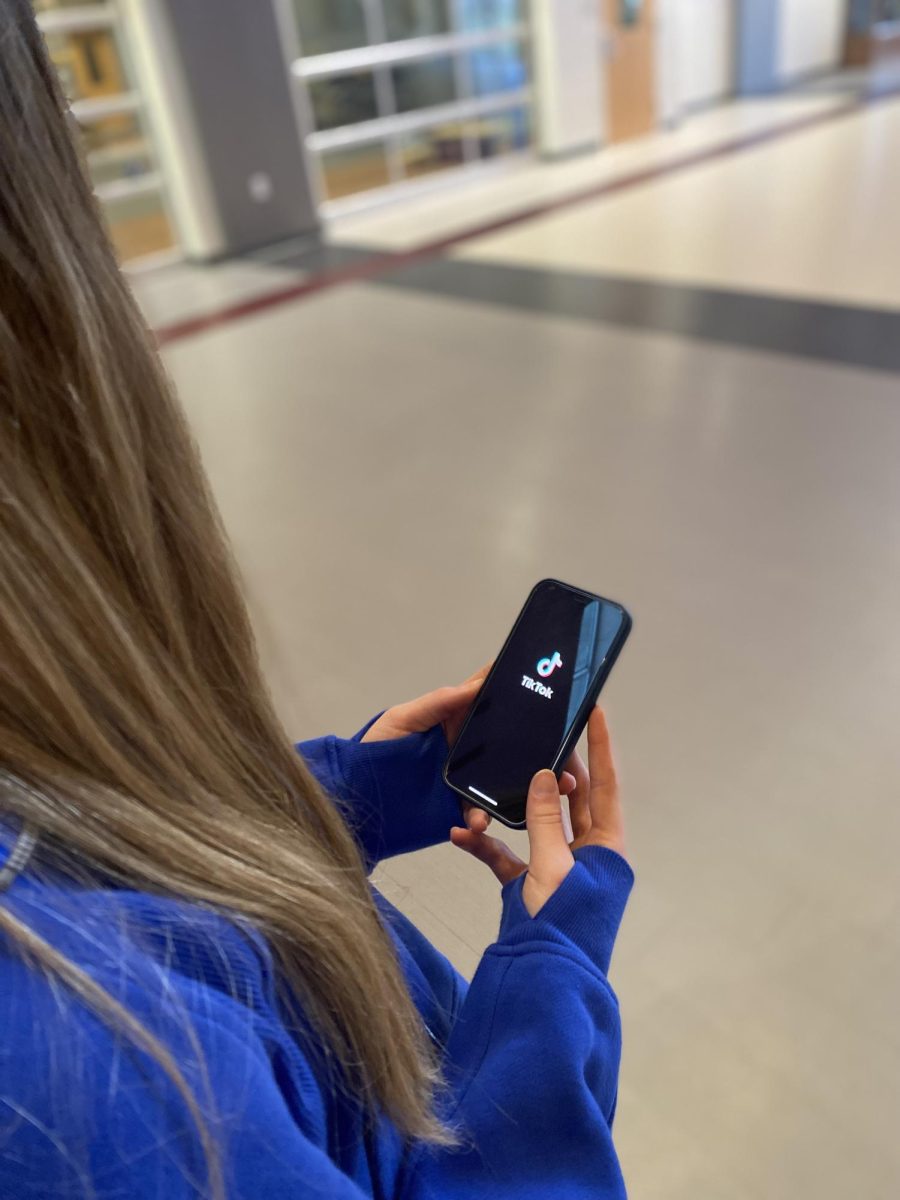Since TikTok appeared on the App Store, in September of 2016, it has entertained the average person with its highly engaging short videos that make keeping up with ‘the now’, easier than ever. The content produced lets the creator share personal beliefs and opinions, and thanks to the ‘For You Page’, people are recommended videos that will keep them interested and more willing to consume more of it. But have people become so entranced in the minute-long clips that their very own mind no longer has the patience for anything longer?
Just like the effects of drugs and tobacco, when scrolling endlessly, the brain releases a neurotransmitter, dopamine, that makes it so addictive. Dopamine is a neurotransmitter that plays a crucial role in various bodily functions, however, when a lot of it is released or a ‘dopamine rush’ occurs, it leads to pleasure, motivation, and energy one may not have had before. But when this surge becomes extensive and repeated, the brain becomes addicted and “hopes that the pleasurable experience will re-occur” as cited from “Brown University’s, School of Public Health”. And in this case, when TikTok or any other social media is repeatedly in use, this dopamine rush makes the scrolling so enjoyable for long periods.
This addiction goes further than the hours spent ‘doom scrolling’ on a screen. This translates over into everyday life, especially for the “majority of teens ages 13 to 17 say they use TikTok” from “Pew Research Centers”, survey data. When teens, who are also students, spend their days sitting in a classroom setting, their addiction is majorly challenged, especially because many schools have adopted the no phone rule on the school grounds. This means, all the time that should be spent studying and keeping up on schoolwork, is spent on social media, mainly TikTok. Which causes an increase in academic decline, mental health issues, and reduced focus. These students are also known to neglect their responsibilities and have an increase in procrastination. This is why the more time spent on “TikTok’s never-ending stream of… content, the harder it becomes to focus on anything else,” as the site, Unplugged, stated.
Furthermore, the mental health aspect of social media grew when TikTok began its rise in popularity, whether it be a positive or negative impact. The negative side ranges from the harmful content to the social comparison. Social comparison causes many challenges with self-image and acceptance, while the harmful content is either the explicit side of social media or just a blatant hateful nature towards an individual or a minority. Along with “the cyberbullying social exclusion, and drama that can occur on these networks” are also crucial to the lowered self-esteem of almost 45% of all teens, as cited from DBSA. However, some positives come out of the app, such as community building, support, and a place to share information. And with the more time spent on the app, the more likely it is to face backlash or hate, while also wanting to obtain validation and acceptance, which can drive a person to excessively use the server. Since the app has 1.582 billion monthly users, there is always a person for a person, someone who shares the same opinion as another. These creators who seem to speak to the viewers, gain lots of popularity, and to keep the viewers entertained, post overly to keep up with the wants of their audience.
TikTok has also been known best for its ability to distort time in a way that someone could scroll for what seems minutes, however hours. By doing this enough ever so often, it becomes a form of escapism and allows the user to escape reality and the stresses of everyday situations. This escapism also has its pros and cons, being that it allows for a break from daily tasks but also can lead to neglecting real-life responsibilities if repeated constantly. While the brain does require its breaks as any other part of the body, too much of these can produce a bad work ethic and decrease the productivity of a person. When there are no limits, people feel no need to stop.







